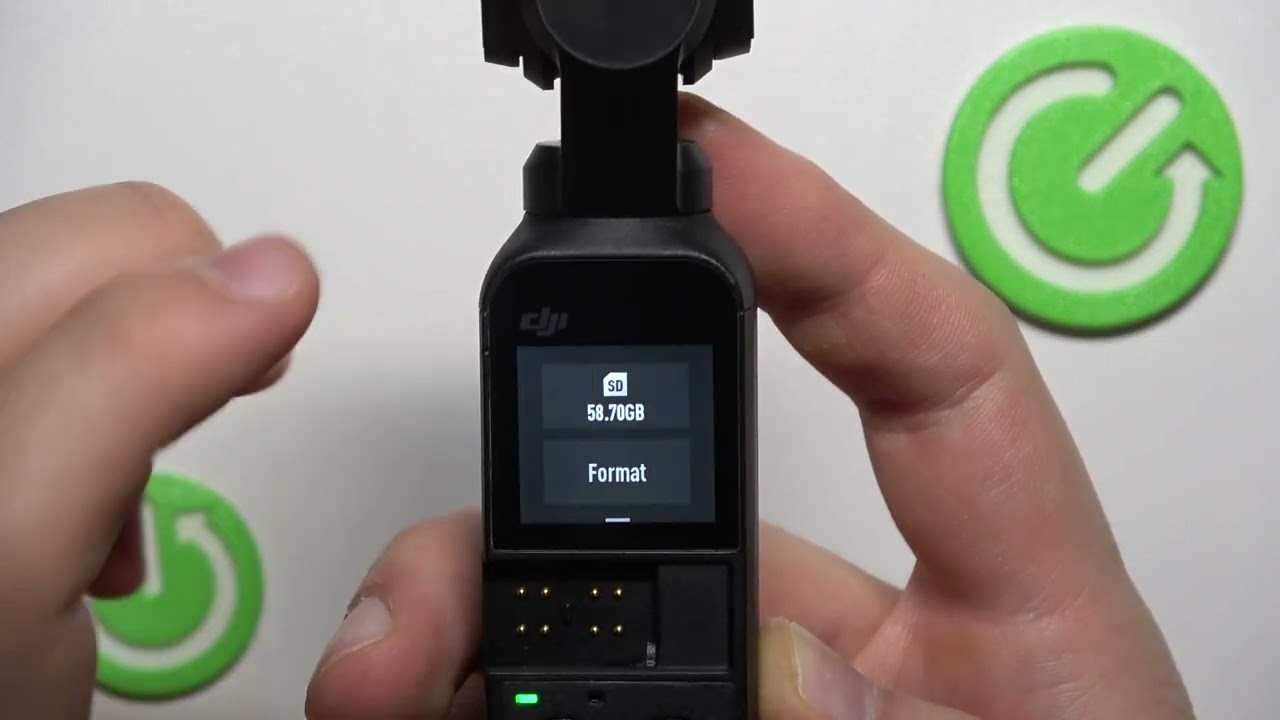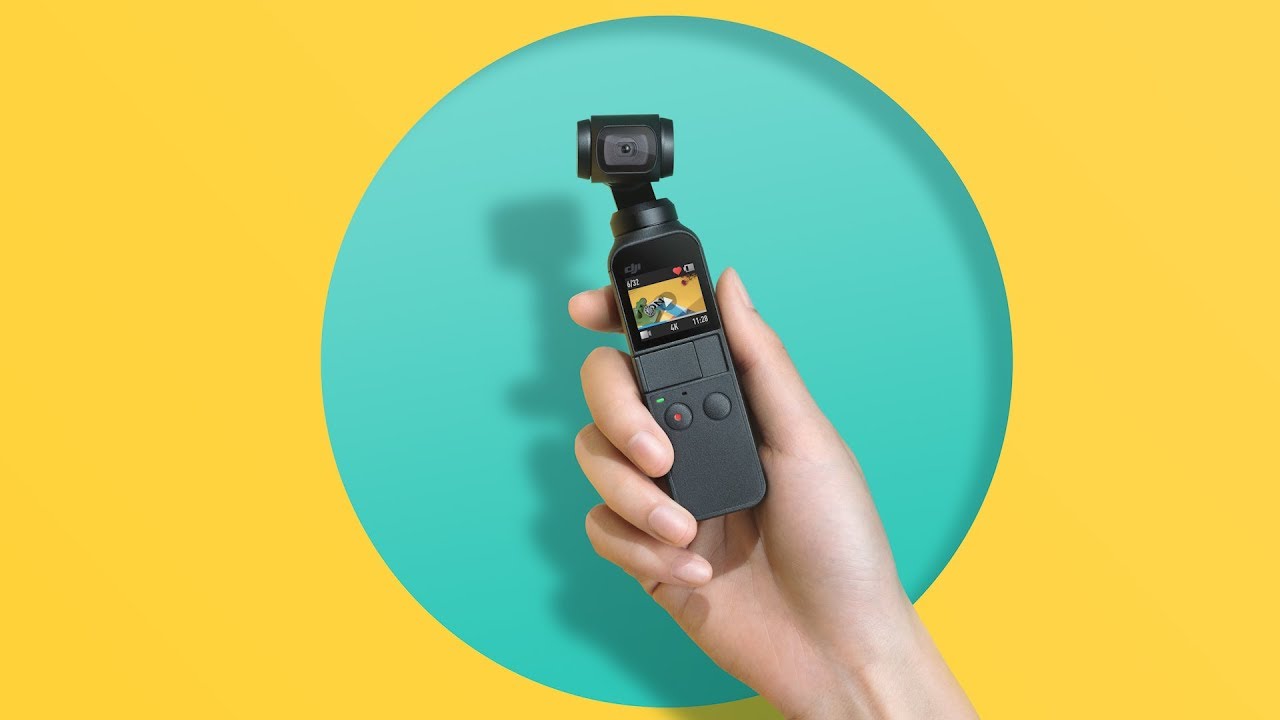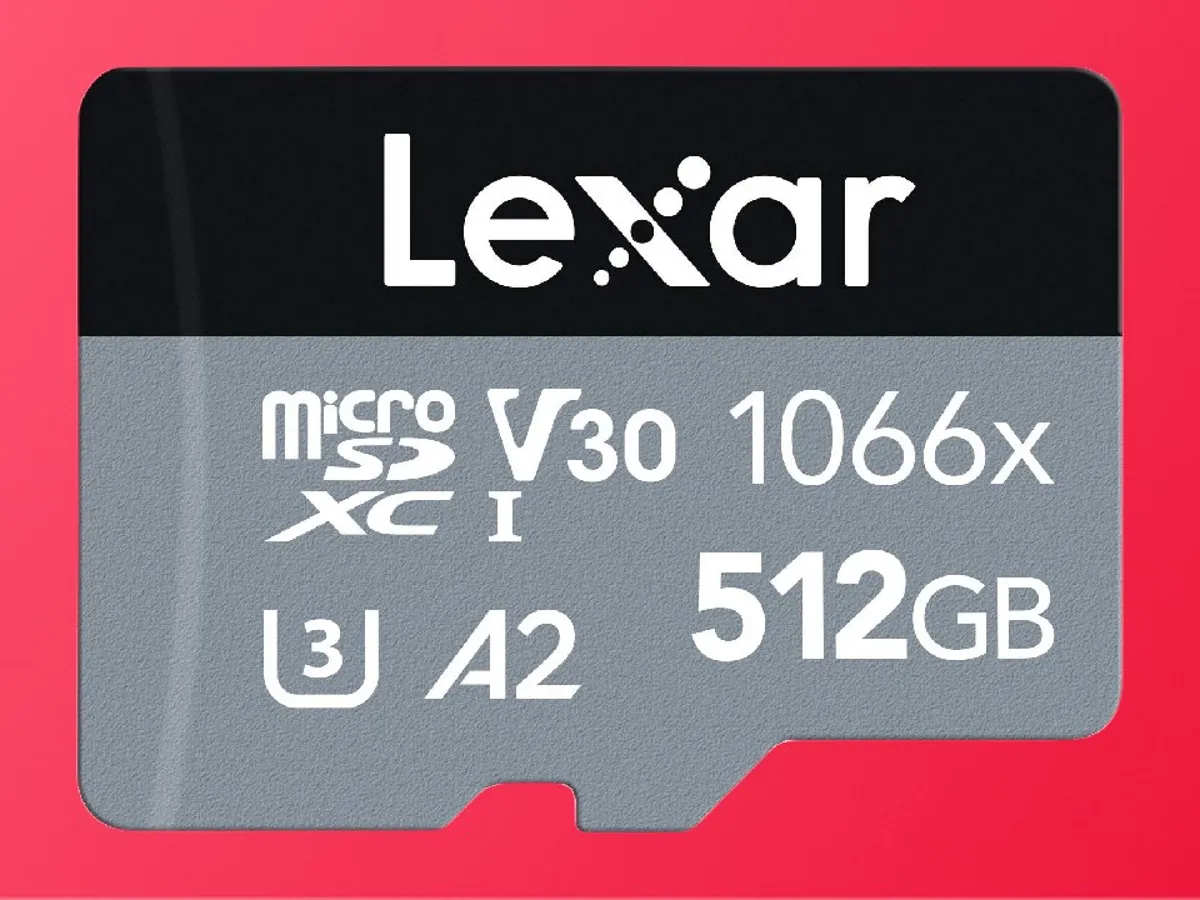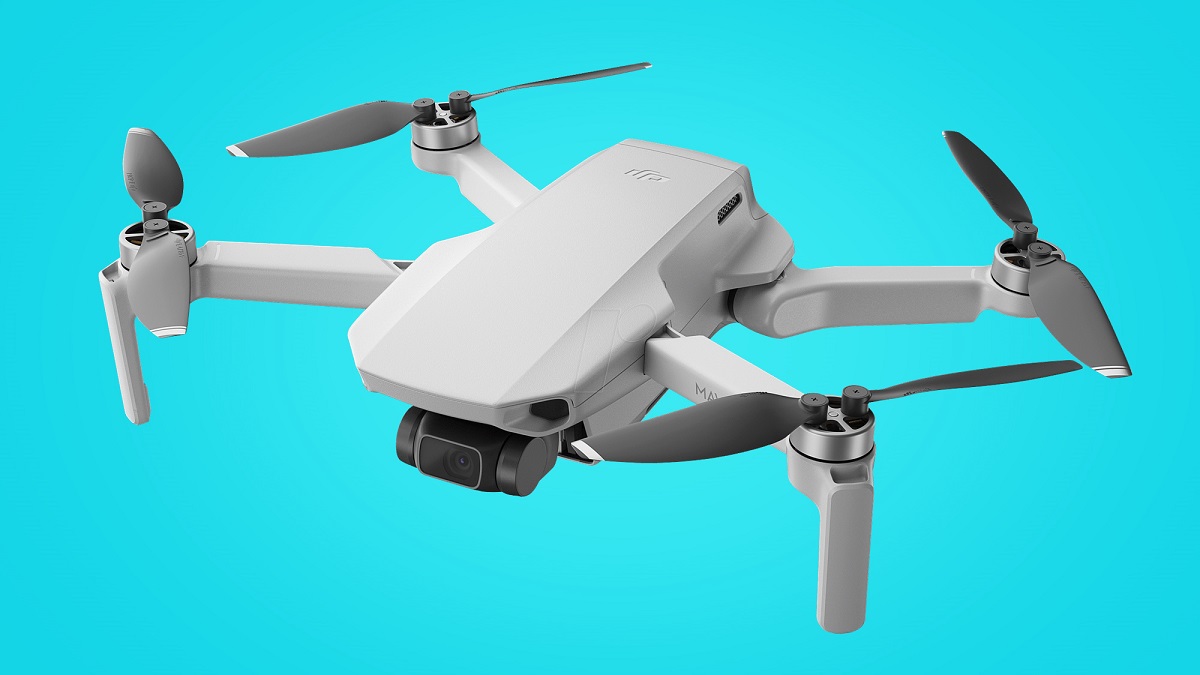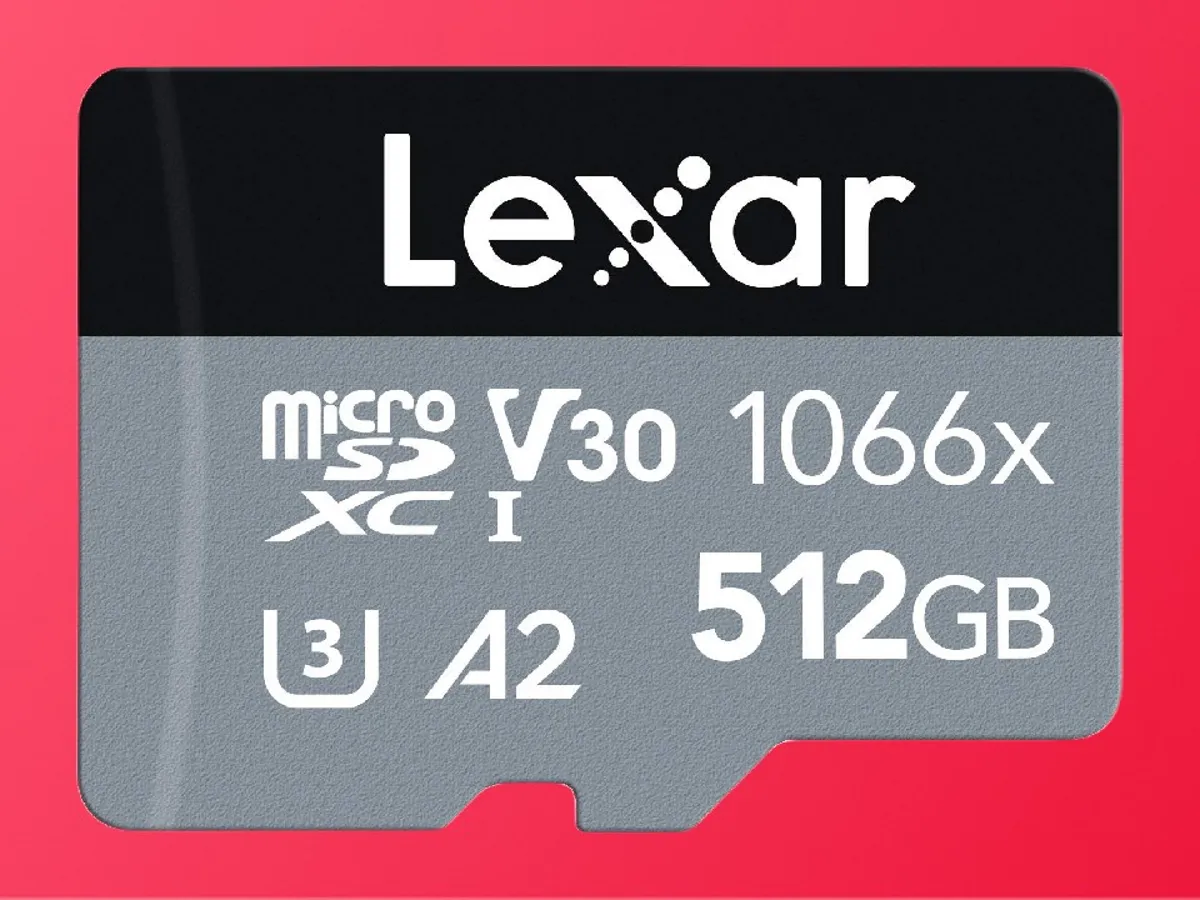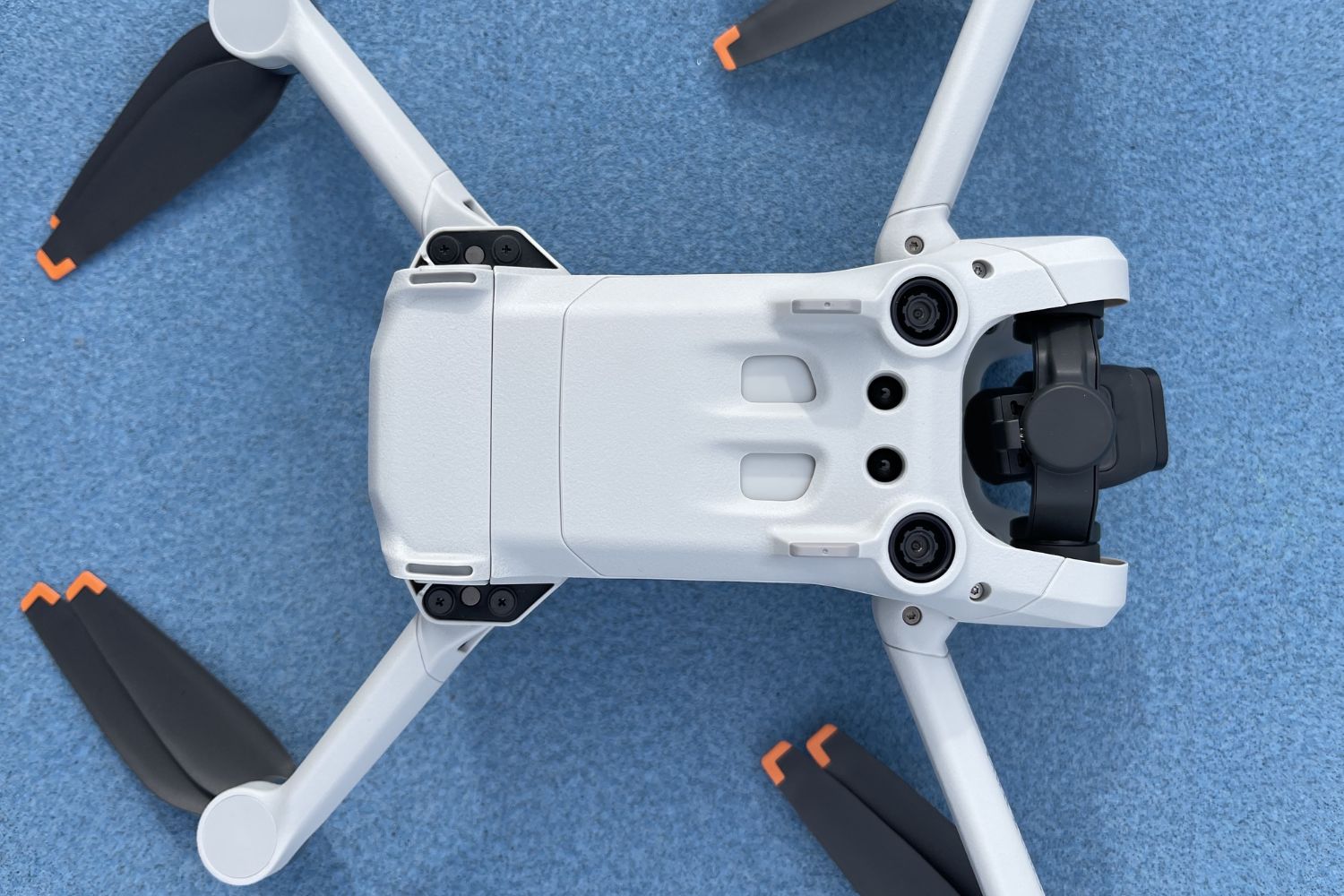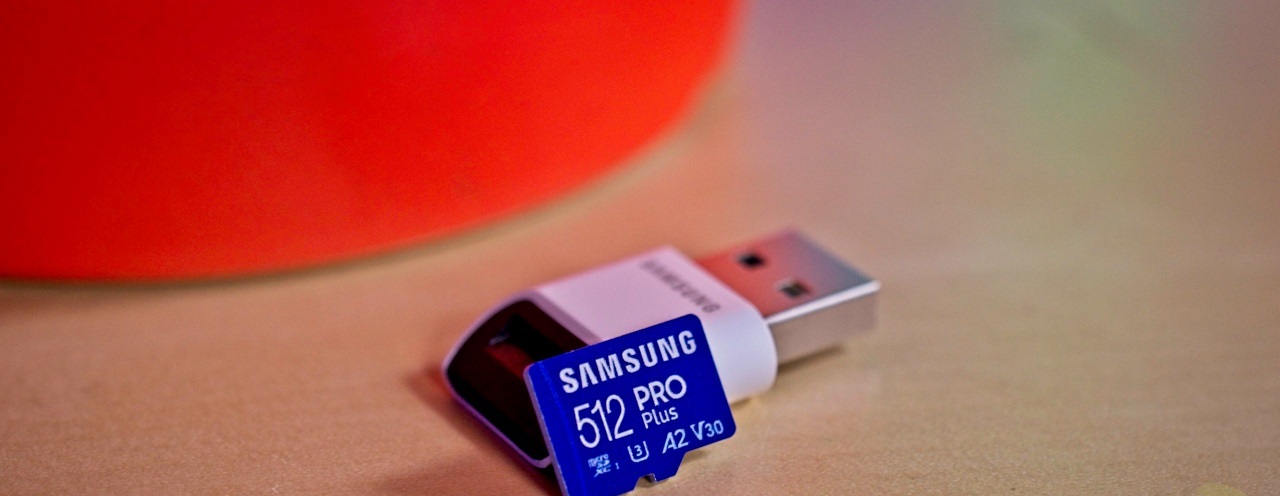Introduction
Welcome to the world of DJI Pocket 2, the compact and powerful camera that allows you to capture stunning moments with ease. As you embark on your creative journey with this incredible device, one essential task you need to be familiar with is formatting the SD card on the DJI Pocket 2. In this guide, we will walk you through the process of formatting your SD card, ensuring smooth operation and high-quality footage every time.
Formatting the SD card is a necessary step to ensure optimal performance of your DJI Pocket 2. It erases all the data on the card and sets it up for recording new files. By formatting the SD card regularly, you can prevent potential issues such as corrupted files, playback errors, or even camera freezing.
It is important to note that each SD card is formatted specifically for the device it is used with. Hence, it is recommended to format the SD card on the DJI Pocket 2 rather than using a computer or another camera. This ensures compatibility and reduces the risk of compatibility issues or loss of data.
Formatting may seem like a simple process, but it is crucial to follow the correct steps to avoid any mishaps. In the following sections, we will guide you through different methods of formatting the SD card on your DJI Pocket 2, step by step. Whether you prefer using the DJI Mimo app, the camera settings, or a computer with a card reader, we have got you covered.
Before diving into the specifics, let’s go over a few precautions to keep in mind before formatting your SD card. These precautions will help you ensure the safety of your data and the longevity of your SD card.
Why Format an SD Card on DJI Pocket 2
Formatting the SD card on your DJI Pocket 2 is essential for several reasons. Let’s explore why it is important to regularly format the SD card:
1. Optimal Performance: Formatting the SD card helps maintain the optimal performance of your DJI Pocket 2. Over time, the card can accumulate fragmented data, which can affect the camera’s read and write speeds. By formatting the card, you ensure that it is clean and organized, allowing for smooth recording and playback.
2. Prevent Corrupted Files: When you continue to use the same SD card without formatting, there is a risk of file corruption. This can lead to footage that becomes inaccessible or unplayable. Formatting clears any potential file system errors, reducing the chances of encountering corrupted files.
3. Clear Storage Space: As you accumulate recordings on your SD card, it can consume a significant amount of storage space. Formatting the card clears all files, freeing up valuable storage for new recordings. This is particularly important if you have limited space on your SD card and want to maximize its capacity.
4. Ensure Compatibility: Each device has its own file system format, and formatting the SD card on the DJI Pocket 2 ensures compatibility between the card and the camera. If you have previously used the card with another device or camera, formatting it on the DJI Pocket 2 is necessary to prevent any potential compatibility issues.
5. Maintain Data Integrity: Formatting the SD card eliminates any residual data from previous recordings, ensuring that your footage starts with a clean slate. This helps maintain the integrity of your data and ensures that there are no remnants of old files that could potentially interfere with new recordings.
6. Troubleshoot Issues: If you encounter any issues with your DJI Pocket 2, such as freezing or errors during recording, formatting the SD card can often resolve these problems. It eliminates any potential software conflicts or corrupted data that may be causing the issues, allowing for a fresh start.
7. Start Fresh: Lastly, formatting the SD card on your DJI Pocket 2 gives you a sense of starting fresh with every new recording. It provides a clean canvas on which you can capture your creative moments without any worries or distractions.
Now that you understand the importance of formatting the SD card on your DJI Pocket 2, let’s move on to the precautions you should take before formatting to ensure a smooth and hassle-free process.
Precautions before Formatting an SD Card
Before you proceed with formatting your SD card on the DJI Pocket 2, it is important to take a few precautions. These steps will help you to protect your data and ensure a successful formatting process:
1. Back up your data: Before formatting the SD card, make sure to back up any important files or footage that you want to keep. Formatting erases all the data on the card, so it is essential to transfer your files to a safe location, such as your computer or external storage device.
2. Check for locked files: Ensure that there are no locked files on your SD card. Locked files are protected from deletion and will not be formatted along with other files. If you come across any locked files, manually unlock them using the camera or computer before proceeding with the formatting process.
3. Verify power and battery level: It is crucial to have sufficient battery power or a reliable power source when formatting the SD card. If the battery dies or the power is interrupted during formatting, it can lead to data loss or even potential damage to the SD card. Make sure your DJI Pocket 2 is adequately charged or connected to a power source before formatting.
4. Use recommended SD card: DJI recommends using high-quality SD cards that meet the requirements of the DJI Pocket 2. Using substandard or incompatible SD cards can result in performance issues, recording errors, or compatibility problems. Refer to the DJI Pocket 2 user manual or DJI’s official website for the recommended SD cards.
5. Check for firmware updates: Before formatting, ensure that your DJI Pocket 2 has the latest firmware installed. Firmware updates often include improvements and bug fixes related to SD card performance and compatibility. Upgrading to the latest firmware can help ensure a smooth formatting process and enhance the overall user experience.
6. Handle the SD card with care: SD cards are delicate electronic devices, and mishandling them can lead to damage or data loss. Always handle the SD card carefully, avoiding exposure to extreme temperatures, moisture, or physical impacts. Additionally, be cautious when inserting or removing the SD card from the DJI Pocket 2 to prevent any damage to the card or the camera’s SD card slot.
7. Follow manufacturer’s instructions: Lastly, it is crucial to follow the manufacturer’s instructions regarding SD card formatting. Different camera models and firmware versions may have specific formatting requirements or steps. Refer to the DJI Pocket 2 user manual or online resources provided by DJI for accurate and up-to-date instructions.
By taking these precautions before formatting your SD card on the DJI Pocket 2, you can ensure the safety of your data and a seamless formatting experience. Now that you are prepared, let’s move on to the step-by-step guide to format an SD card on the DJI Pocket 2.
Step-by-Step Guide to Format an SD Card on DJI Pocket 2
Formatting the SD card on your DJI Pocket 2 is a straightforward process. Here is a step-by-step guide to help you format the SD card successfully:
Option 1: Formatting using the DJI Mimo App
If you prefer using the DJI Mimo app to control your DJI Pocket 2, follow these steps:
- Ensure that your DJI Pocket 2 is turned on and connected to your smartphone or tablet through the DJI Mimo app.
- Open the DJI Mimo app and navigate to the camera view.
- Tap on the settings icon in the top-right corner of the app.
- Scroll down and find the “Format SD Card” option. Tap on it.
- A pop-up window will appear, asking for confirmation. Tap “OK” to proceed with the formatting process.
- Wait for the app to format the SD card. Once completed, you will receive a notification on the screen.
- Your SD card is now formatted and ready for use with your DJI Pocket 2.
Option 2: Formatting using the DJI Pocket 2 Camera Settings
If you prefer using the camera settings on your DJI Pocket 2, follow these steps:
- Ensure that your DJI Pocket 2 is turned on and the camera screen is active.
- Swipe down on the screen to access the menu options.
- Scroll right or left to find the “Settings” option and tap on it.
- Navigate to the “Storage & Format” section in the settings menu.
- Select the “Format SD Card” option.
- A confirmation prompt will appear on the screen. Select “OK” to proceed with the formatting process.
- Wait for the DJI Pocket 2 to format the SD card. Once completed, you will see a notification on the screen.
- Now, your SD card is formatted and ready for use with your DJI Pocket 2.
Option 3: Formatting using a Computer or Card Reader
If you prefer formatting the SD card using a computer or card reader, follow these steps:
- Remove the SD card from your DJI Pocket 2 and insert it into your computer’s SD card slot or a compatible card reader.
- Open the file explorer on your computer.
- Locate the SD card in the file explorer and right-click on it.
- Select the “Format” option from the context menu.
- Choose the desired file system format (FAT32 or exFAT) based on your device’s compatibility and capacity requirements.
- Check the “Quick Format” option if it is available.
- Click on the “Start” button to initiate the formatting process.
- Wait for the computer to format the SD card. Once completed, you will receive a notification.
- Remove the SD card from the computer or card reader and insert it back into your DJI Pocket 2.
- Your SD card is now formatted and ready to be used with your DJI Pocket 2.
These three methods offer you different choices to format the SD card on your DJI Pocket 2. Select the one that suits your preference and workflow. Remember to handle the SD card with care and follow the precautions mentioned earlier to ensure the safety of your data and equipment.
Now that you know how to format an SD card on your DJI Pocket 2, let’s move on to troubleshooting common issues that may arise during the formatting process.
Option 1: Formatting using the DJI Mimo App
If you prefer using the DJI Mimo app to control your DJI Pocket 2, formatting the SD card is a simple process. Follow these steps:
- Ensure that your DJI Pocket 2 is turned on and connected to your smartphone or tablet through the DJI Mimo app.
- Open the DJI Mimo app on your mobile device and navigate to the camera view.
- Tap on the settings icon located in the top-right corner of the app’s interface.
- Scroll down through the settings options until you find the “Format SD Card” option. Tap on it.
- A pop-up window will appear on your screen, asking for confirmation to proceed with the formatting. Tap “OK” to confirm.
- Now, the DJI Mimo app will initiate the formatting process on the SD card.
- Wait patiently until the formatting process is completed. You may see a progress bar or indicator to track the progress.
- Once the formatting is finished, you will receive a notification on the screen confirming the successful formatting of the SD card.
- Your SD card is now formatted and ready for use with your DJI Pocket 2.
By choosing to format the SD card using the DJI Mimo app, you can conveniently control the process directly from your mobile device. This method ensures seamless compatibility between the app and the camera, optimizing the performance of your DJI Pocket 2.
Remember to follow the precautions mentioned earlier and maintain a reliable connection between the DJI Pocket 2 and your mobile device throughout the formatting process. It is also advisable to regularly update the DJI Mimo app to access the latest features and improvements.
Now that you know how to format the SD card using the DJI Mimo app, let’s explore the second option for formatting through the DJI Pocket 2 camera settings.
Option 2: Formatting using the DJI Pocket 2 Camera Settings
If you prefer using the camera settings on your DJI Pocket 2 to format the SD card, follow these simple steps:
- Ensure that your DJI Pocket 2 is turned on and the camera screen is active.
- Swipe down on the screen to access the menu options.
- Scroll right or left to find the “Settings” option and tap on it.
- Navigate through the settings menu until you find the “Storage & Format” section.
- Select the “Format SD Card” option within the storage settings.
- A confirmation prompt will appear on the screen, asking for your confirmation to proceed with the formatting. Tap “OK” to confirm.
- The DJI Pocket 2 will initiate the formatting process on the SD card.
- Wait patiently until the formatting process is completed. You may see a progress indicator on the screen.
- Once the formatting is finished, you will receive a notification on the screen confirming the successful formatting of the SD card.
- Your SD card is now formatted and ready to be used with your DJI Pocket 2.
By formatting the SD card through the DJI Pocket 2 camera settings, you have a direct control over the process using the camera’s intuitive interface. This method ensures the synchronization between the camera and the SD card, optimizing the overall performance and compatibility.
Remember to follow the precautions mentioned earlier and ensure that your DJI Pocket 2 has sufficient battery life or is connected to a power source during the formatting process. It is also advisable to keep your DJI Pocket 2 updated with the latest firmware for optimal performance and to access any new features or improvements.
Now that you know how to format the SD card using the DJI Pocket 2 camera settings, let’s explore the last option for formatting the SD card using a computer or card reader.
Option 3: Formatting using a Computer or Card Reader
If you prefer formatting the SD card using a computer or card reader, follow these steps:
- Remove the SD card from your DJI Pocket 2 and insert it into your computer’s SD card slot or a compatible card reader.
- Open the file explorer on your computer.
- Locate the SD card in the file explorer, typically represented as a removable disk.
- Right-click on the SD card and select the “Format” option from the context menu.
- A formatting window will appear, allowing you to choose the desired file system format. Typically, FAT32 or exFAT is recommended, depending on your device’s compatibility and capacity requirements.
- Check the “Quick Format” option if it is available, which speeds up the formatting process.
- Click on the “Start” button to initiate the formatting process.
- Wait patiently as the computer formats the SD card. A progress bar or indicator may appear to track the progress.
- Once the formatting is completed, you will receive a notification or the SD card will disappear from the file explorer.
- Remove the SD card from the computer or card reader and insert it back into your DJI Pocket 2.
- Your SD card is now formatted and ready to be used with your DJI Pocket 2.
Formatting the SD card using a computer or card reader provides flexibility and control over the formatting process. It allows you to choose the desired file system format based on your device’s compatibility and requirements.
Keep in mind the precautions mentioned earlier and handle the SD card with care during this process. Avoid removing the SD card while formatting, as it may result in data loss or damage to the card. Additionally, ensure that your computer is equipped with an updated and reliable operating system to perform the formatting smoothly.
Now that you know how to format the SD card using a computer or card reader, let’s move on to troubleshooting common issues that may arise during the formatting process.
Troubleshooting Common Issues during Formatting
While formatting an SD card on your DJI Pocket 2 is usually a straightforward process, you may encounter some common issues. Here are a few troubleshooting steps to help you resolve such issues:
1. SD Card Not Detected: If your DJI Pocket 2 does not detect the SD card, make sure it is properly inserted into the SD card slot. Remove the card, clean the contacts with a soft cloth, and reinsert it firmly. If the problem persists, try using a different SD card to determine if the issue lies with the card or the camera.
2. Formatting Takes Too Long: If the formatting process seems to take an unusually long time, ensure that the battery on your DJI Pocket 2 is sufficiently charged or connected to a power source. A low battery or insufficient power can slow down the formatting process. If the issue persists, try formatting the SD card using a different method or on a computer to see if it improves the speed.
3. Format Error Message: If you encounter a format error message during the formatting process, it may indicate a compatibility issue between the SD card and the DJI Pocket 2. Ensure that you are using a recommended SD card that meets the device’s requirements. If the error persists, try formatting the card using a computer with a card reader or consult DJI support for further assistance.
4. Formatting Interrupted or Frozen: If the formatting process gets interrupted or the camera freezes during formatting, it can potentially corrupt the SD card or cause data loss. In such cases, remove the SD card, restart your DJI Pocket 2, and try formatting again. If the problem persists, consider formatting the card using a computer or seeking professional help to resolve the issue.
5. Unable to Access Formatted SD Card: After formatting the SD card, if you encounter problems accessing or recording on the card, ensure that the card is compatible with your DJI Pocket 2. Verify that the card is formatted in the correct file system (FAT32 or exFAT) and that it meets the device’s maximum supported storage capacity. If the issue continues, try reformatting the card using a different method or using a different SD card altogether.
If you have tried the troubleshooting steps above and still encounter problems with formatting the SD card on your DJI Pocket 2, it is advised to reach out to DJI customer support for further assistance. They can provide specific guidance for your situation and help resolve any persistent issues.
With troubleshooting in mind, you are now equipped to overcome common issues that may arise during the formatting process. In the next section, we will wrap up this guide with a brief summary of the key points discussed.
Conclusion
Formatting the SD card on your DJI Pocket 2 is a crucial task to ensure optimal performance, prevent issues, and maintain the integrity of your data. Whether you choose to format the SD card using the DJI Mimo app, the camera settings, or a computer/card reader, following the correct steps and precautions is essential for a successful formatting process.
We discussed the importance of formatting an SD card on the DJI Pocket 2, including the benefits of optimal performance, preventing corrupted files, clearing storage space, ensuring compatibility, maintaining data integrity, troubleshooting issues, and starting fresh with every new recording.
Before formatting, we emphasized the importance of taking precautions such as backing up your data, checking for locked files, verifying power and battery levels, using a recommended SD card, checking for firmware updates, handling the SD card with care, and following the manufacturer’s instructions.
We provided a step-by-step guide for each of the three formatting options: using the DJI Mimo app, the DJI Pocket 2 camera settings, or a computer/card reader. These methods offer flexibility and convenience, ensuring that your SD card is formatted correctly and ready to capture your creative moments.
In addition, we discussed troubleshooting common issues that may arise during the formatting process, including SD card not detected, formatting taking too long, format error messages, formatting interruptions, and issues accessing the formatted SD card. We provided tips to resolve these issues and recommended reaching out to DJI customer support if problems persist.
Now that you are equipped with the knowledge and guidance for formatting the SD card on your DJI Pocket 2, you can confidently ensure the smooth operation and superior performance of your camera. Remember to regularly format your SD card to maintain its optimal functioning and enjoy capturing breathtaking moments with your DJI Pocket 2.







